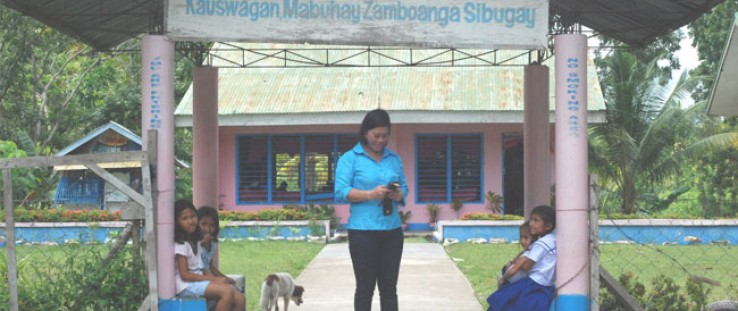 Lolita Singahan outside her school.
Ronald Enad, 1st Valley Bank
Lolita Singahan outside her school.
Ronald Enad, 1st Valley Bank
 Lolita Singahan outside her school.
Ronald Enad, 1st Valley Bank
Lolita Singahan outside her school.
Ronald Enad, 1st Valley Bank
With over 90-percent mobile phone coverage, but few physical banks, text-based banking means nearly 400,000 of the archipelago’s rural residents can easily access crucial services for the first time.
For a long time, Lolita Singahan greeted paydays with a mix of relief and anxiety—relief, because it meant receiving money to cover her family’s expenses, and anxiety, because it meant she would need to spend an entire day traveling to the bank to get her paycheck.
Although she makes about $800 a month, which is way above the minimum pay in the Zamboanga Peninsula region in Mindanao, Singahan still needs additional funds to support her children’s education. She has found refuge in the loan program of 1st Valley Bank for almost six years now.
Singahan, a 52-year-old school teacher in Olutanga Island, Zamboanga Sibugay province, is the recipient of a salary-supplementing loan from 1st Valley Bank. Every payday, the loan payment is automatically deducted from her salary account. To withdraw the balance, Singahan needs to make a six-hour journey to and from the bank. This means taking a motorcycle to the port of Hula-Hula in Olutanga Island, followed by a 10-minute boat ride to the port of Guicam, then a three-hour motorcycle or bus ride to the municipality of Imelda where the 1st Valley Bank branch is located. The one-way trip on mostly unpaved roads takes more than three hours and costs her $4.50 if she travels by bus, or nearly double that via motorcycle.
“It takes longer to get to Imelda by bus because of the frequent stops. I want to be back to Guicam before it gets dark, so I prefer taking the motorcycle even if it is more expensive,” she says. Singahan schedules her trip on Saturdays to avoid missing work.
Norman Florida, manager of 1st Valley Bank’s Imelda branch, sees firsthand how taxing the trip can be. “There are times when the teachers come to our office drenched, either because of the rain or the roads are so bad that their motorcycle overturned straight into the puddles of water or into the irrigation canals. Sometimes, they would spend an extra half-hour at our office drying their clothes, important documents and the contents of their wallets before making the trip back to Olutanga.”
Borrowers who are part of the same loan program as Singahan were the first clients that came to mind after Florida received a USAID training course on branchless banking. Held in late October in Surigao City last year, the course trained bank staffers on how to promote mobile banking.
The training is part of the greater Microenterprise Access to Banking Services program launched by USAID 15 years ago to make financial services available to microentrepreneurs.
Implemented in partnership with the Rural Bankers Association of the Philippines and overseen by the Office of the President through the Mindanao Development Authority, the program trains rural banks in microfinance best practices, helping them provide microentrepreneurs, farmers and low-income clients with small loans, deposits and insurance services.
In 15 years, these banks have disbursed over 3 million loans totaling approximately $1 billion to more than 1 million new borrowers.
Eight years ago, USAID added a focus on enabling banks to offer mobile banking services so their clients could more easily pay their loans, and make deposits and withdrawals. In a country made up of over 7,000 islands, but with extraordinary mobile coverage, it was a logical step towards the goal of bringing more of the country’s poor into the financial fold.
“Since then, the groundbreaking effort has been instrumental in easing the lives and expanding the opportunities of thousands of citizens in remote areas,” says USAID/Philippines Mission Director Gloria D. Steele.
Banking Made Easy
Over the past two years, educating citizens on how to use mobile banking services has become a critical USAID focus. “To support this effort, we are helping train rural banks on how to provide better services to the underserved.” says USAID/Philippines Microfinance Specialist Tess Espenilla, who manages the project.
At least 28 staffers, supervisors and officers from three pilot rural banks—1st Valley Bank, Cantilan Bank and GM Bank—completed the training, which has enabled them to better educate more clients on using mobile banking. 1st Valley Bank is a pilot bank under the financial education initiative, and clients like Singahan are taught how to make withdrawals using their mobile phones from their homes or workplaces.
As part of its pioneering efforts, USAID supported the design of the financial education materials, including user guides, posters, tri-fold stands and illustrated books, to raise awareness and encourage the use of mobile phone banking services.
The new education effort is also supported by Microfinance Opportunities, a Washington-based, non-profit microfinance organization, and The MasterCard Foundation, which seeks to advance microfinance and youth learning to promote financial inclusion in developing countries. This is part of a range of mobile banking services developed by the USAID program in partnership with the private sector and supported by the Bangko Sentral ng Pilipinas.
Time=Money
Steele says that, overall, the use of mobile banking services is helping rural bank clients save time and money. Borrowers can use their mobile phones to pay their loans from wherever they are and access their money without having to go to the bank.
Financial education messages—like the value of saving regularly and how to create savings plans—are sent weekly to clients as part of the program’s services.
Now that she is enrolled in the mobile banking service, all Singahan has to do is text withdrawal instructions from her mobile phone to the bank each payday. The bank checks her balance, then sends the requested funds in the form of mobile money to Singahan’s “mobile wallet.” As soon as she receives the message on her phone confirming the amount has been credited, Singahan goes to the cash-in cash-out outlet nearby to convert her mobile money to cash in hand.
“I only started withdrawing money through text last November 2011, and I have been very happy with the service,” she said. “Imagine, I can save almost $17 each payday since I do not need to go through that long and tiring trip to get my money from the bank.”
For 1st Valley Bank, the mobile banking system allows its branches to extend their services to areas off the physical banking grid, like Olutanga Island. According to Samson Cababan Jr., microfinance head of 1st Valley Bank: “The mobile phone banking system has not only allowed us to deepen our customer relationship and offer clients a more convenient way to bank, it has also allowed us to expand to areas that are underserved and untapped.”
Transforming the Banking Landscape
“Connecting mobile phone technology and rural banking services has produced astounding results,” says Steele.
As of April 2012, 75 Philippine banks were accredited for mobile banking, with nearly 1,170 bank branches and sub-offices offering the service to over 390,000 combined rural bank clients. The number of mobile banking transactions through rural banks from 2004 to July 2012 has reached over 3 million, with a total value of over $400 million.
Helping the initiative along is the fact that Filipinos are avid mobile phone users. Some countrywide ownership-rate estimates top 100 percent, since many people have more than one device. In fact, the number of mobile phone subscribers in the country far exceeds the number of bank account holders, which is only 34 million.
Another key factor is that Filipino remittances, estimated at 20 billion pesos (or roughly $476 million) in 2011, are growing. Within the Philippine islands, citizens are constantly looking for the fastest and most cost-efficient way to send money to their loved ones, since every peso counts.
Says Espenilla, “USAID’s partnership with the private sector, including mobile service providers Globe Telecom and Smart Communications, contributed to the program’s success.” Likewise, she says, “The support of regulators, particularly the Bangko Sentral ng Pilipinas, towards navigating the uncharted system and empowering the rural banks provided pillars by which the project stood strong.”
She adds: “All players—the banks, the retail agent network, e-service provider, vendor network, and the end-user—must have sufficient incentive to participate in the mobile money ecosystem. It is important for clients to develop trust in mobile money. They need to know and experience the process to get into the loop. And when demand is created, it must be met by easily accessible and reasonably priced supply. Scale is important—the system must be widespread for citizens to get interested and involved.”
Building upon the Microenterprise Access to Banking Services program, USAID/Philippines recently launched the Scaling Innovations in Mobile Money project to boost expansion and rapid adoption of mobile money services. The project will target broad areas of intervention: government services, the payment system, electronic payroll and mobile money network infrastructure. Cutting across these areas, the program will address supply and demand constraints to broaden adoption of mobile money in the Philippines while promoting global knowledge sharing.
“We are not only transforming the way rural banks serve communities, but also opening up new and limitless opportunities for citizens in isolated and far-flung areas. This is creating greater financial inclusion and improving people’s lives,” says Steele.
USAID is helping to bring banking to rural populations in several countries around the world, including Nepal (see sidebar), Indonesia and Kenya. The Philippines is one of four countries—along with El Salvador, Ghana and Tanzania—under the U.S. Partnership for Growth program that focuses development assistance on strengthening economic growth.
“We live in a world where you don’t need a bank in your neighborhood to safely store your money or access financial services—you can simply use your phone,” notes Priya Jaisinghani, director of mobile solutions within USAID’s Office of Innovation and Development Alliances.
This article was written by staff from USAID/Philippines.
This article originally appeared in September 2012







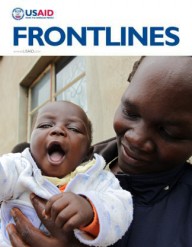

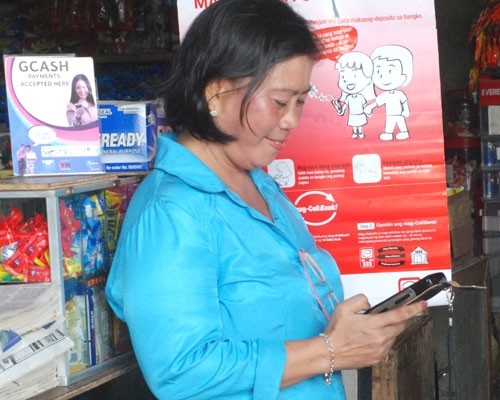
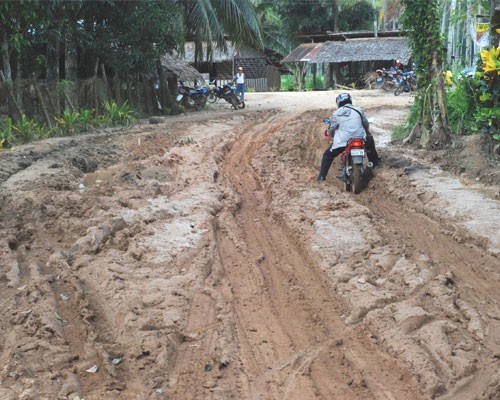
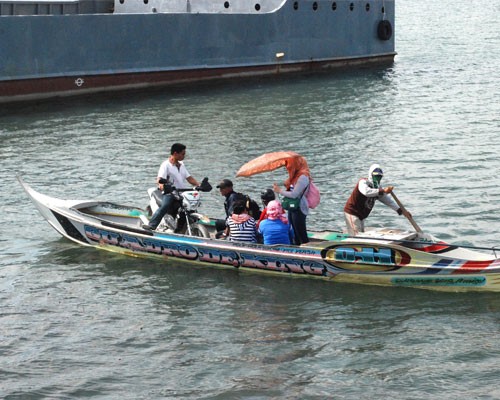
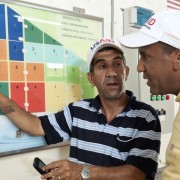

Comment
Make a general inquiry or suggest an improvement.